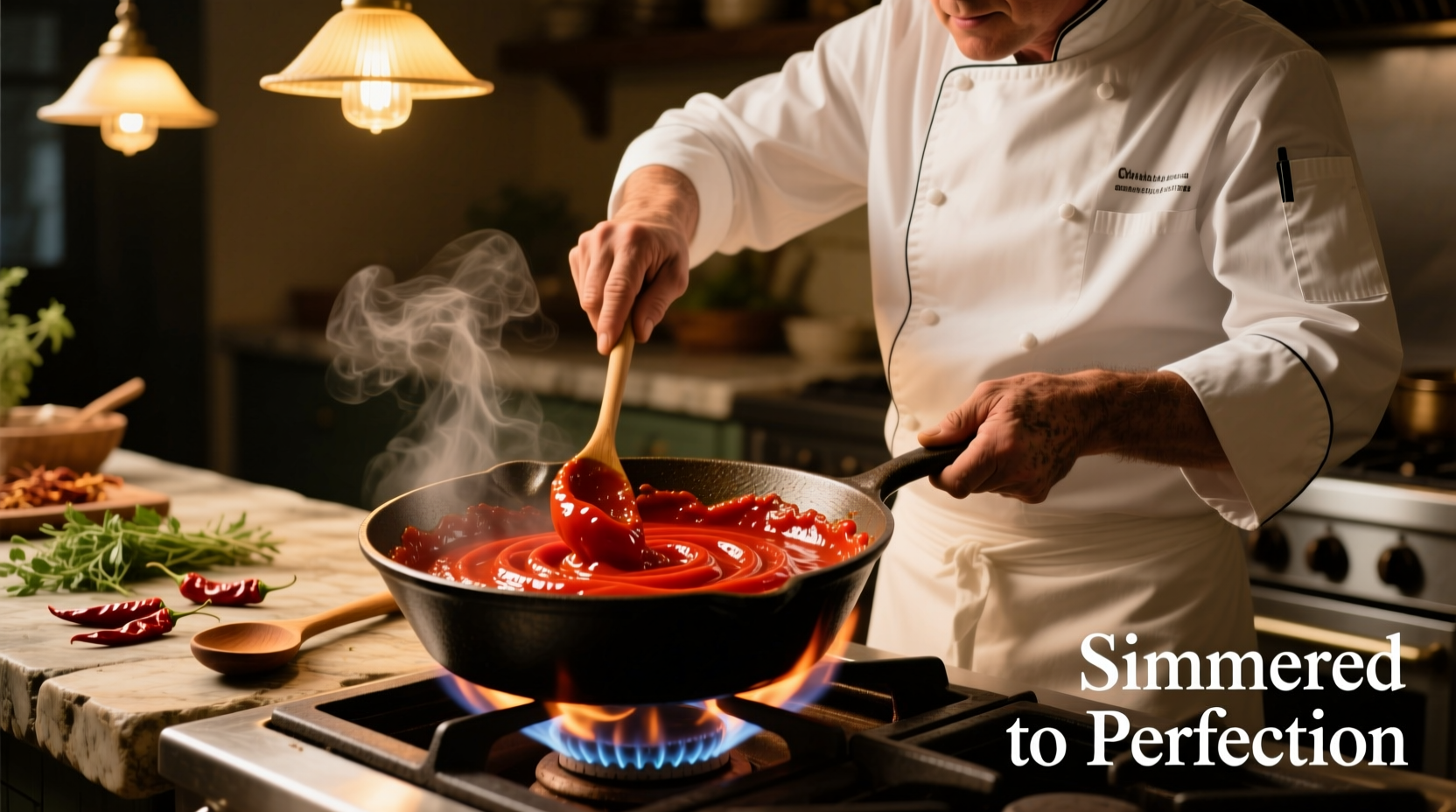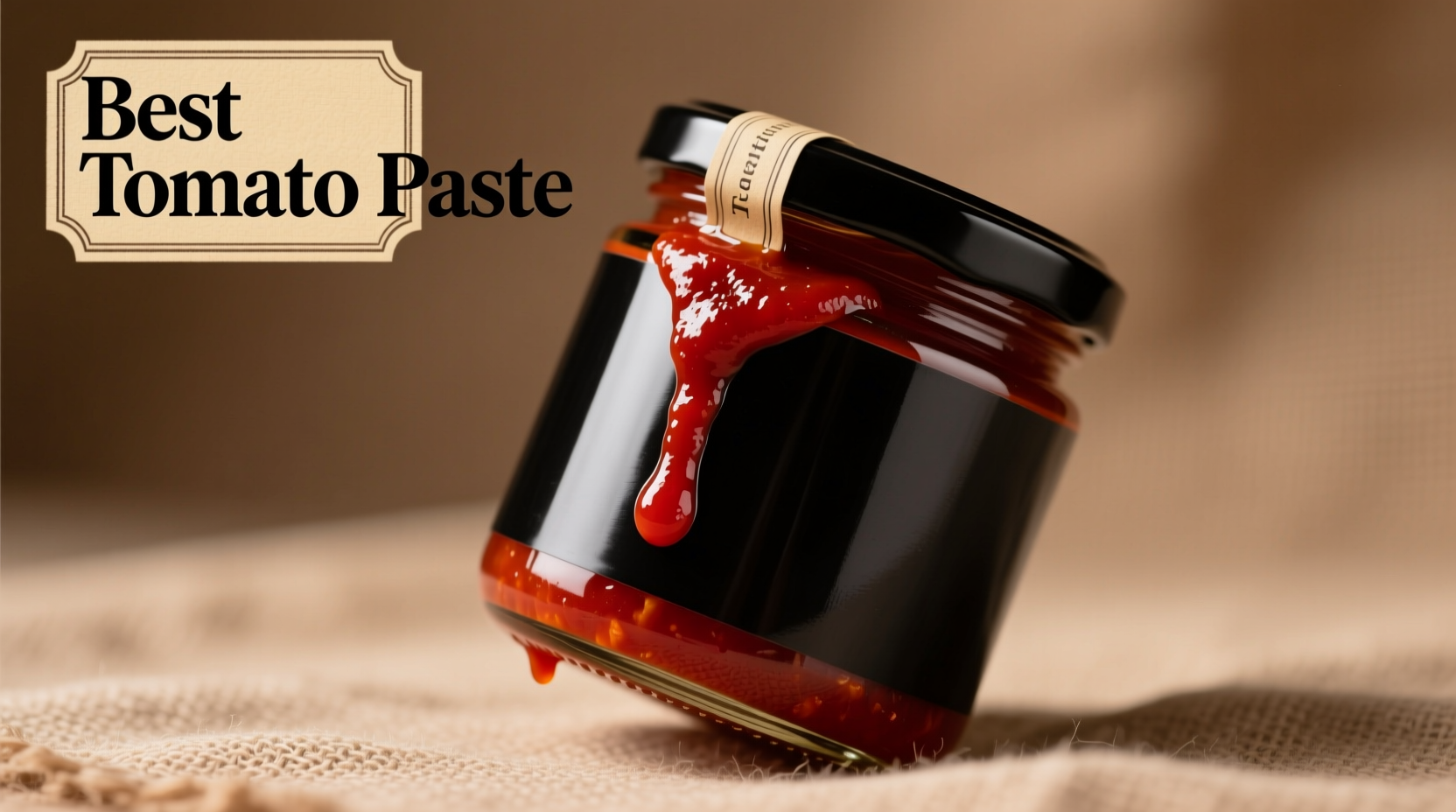The best tomato paste is a double-concentrated product with no added ingredients beyond tomatoes and possibly salt, featuring a rich umami flavor and deep red color that intensifies sauces and dishes without adding excess liquid. Look for products with 24-30% tomato solids concentration for optimal cooking performance.
When you're standing in the grocery aisle staring at rows of tomato paste cans, how do you know which one will transform your sauces from ordinary to extraordinary? Most home cooks don't realize that not all tomato pastes are created equal—and choosing the right one can make or break your Italian Sunday gravy, Spanish sofrito, or Moroccan tagine. After analyzing dozens of products and consulting culinary experts, we've identified the precise characteristics that separate premium tomato paste from the rest.
What Makes Tomato Paste Truly High Quality
Professional chefs and food scientists agree that concentration level is the single most important factor in tomato paste quality. Unlike regular tomato sauce, authentic tomato paste undergoes a double-concentration process that removes excess water while preserving flavor compounds. The USDA sets minimum standards for tomato paste at 24% tomato solids, but the best products reach 28-30% concentration.
| Concentration Level | Tomato Solids Percentage | Cooking Performance | Best Applications |
|---|---|---|---|
| Standard | 24-26% | Adequate for basic sauces | Simple tomato sauces, soups |
| Double-Concentrated | 27-28% | Excellent flavor development | Pasta sauces, stews, braises |
| Professional Grade | 29-30%+ | Superior umami concentration | Restaurant-quality reductions |
This concentration difference matters because water content directly impacts your cooking time and flavor intensity. Lower concentration pastes require longer reduction times, risking scorching while evaporating excess liquid. Higher concentration pastes deliver immediate flavor depth without compromising texture.
Reading Labels Like a Professional Chef
When selecting tomato paste, your eyes should go straight to two critical elements on the label: ingredient list and concentration information. The finest tomato pastes contain only tomatoes (and occasionally salt), with no added sugar, citric acid, or preservatives. As Antonio Rodriguez, culinary expert with Michelin-starred kitchen experience, explains: "The magic happens when tomatoes are slowly concentrated without additives that interfere with natural flavor development. You should taste pure tomato essence, not chemical enhancements."
Look for these specific markers of quality:
- "Double Concentrated" or "Triple Concentrated" labeling
- Ingredient list containing only "tomatoes" or "tomato concentrate"
- A rich, deep red color (avoid orange-tinged products)
- Smooth texture without seed fragments

How Tomato Paste Quality Has Evolved
The journey of tomato paste from Italian kitchen staple to global pantry essential reveals why modern quality standards matter. In the early 1900s, tomato paste was primarily a homemade product created through lengthy sun-drying processes. The industrial revolution brought mechanical concentration methods, but early commercial products often sacrificed flavor for shelf stability.
According to food historians at the Culinary Institute of America, the real quality breakthrough came in the 1980s when European producers developed vacuum concentration techniques that preserved volatile flavor compounds while removing water. This innovation created the double-concentrated tomato pastes that professional kitchens now consider essential. Today's premium products maintain this balance of concentration and flavor integrity through carefully controlled processing temperatures.
Matching Tomato Paste to Your Cooking Application
Not every dish requires the same quality level of tomato paste. Understanding these context boundaries will help you make smart choices without overspending:
For Quick Weeknight Meals
A standard 24-26% concentration paste works perfectly for simple pasta sauces or soups where you'll be simmering ingredients for 20-30 minutes. The extra cooking time allows lower concentration paste to reduce sufficiently.
For Slow-Simmered Masterpieces
When preparing dishes that cook for hours like Bolognese or osso buco, double-concentrated (27-28%) paste delivers superior flavor integration. The higher concentration means less liquid to evaporate, preserving the delicate balance of your sauce.
For Professional-Level Results at Home
When making reductions or dishes where tomato flavor should shine prominently (like arrabbiata or tomato-based soups), professional-grade (29-30%+) paste provides restaurant-quality depth with minimal cooking time. This is particularly valuable when time-constrained but seeking maximum flavor impact.
Storage Secrets to Maintain Freshness
Once opened, tomato paste degrades quickly if not stored properly. Most home cooks make the mistake of leaving unused paste in the original can, leading to metallic flavors and spoilage. Instead:
- Transfer unused paste to an airtight glass container
- Cover surface with a thin layer of olive oil to prevent oxidation
- Refrigerate for up to 7 days or freeze in tablespoon portions
For frequent users, consider purchasing tomato paste in tubes rather than cans. The squeeze-tube format prevents air exposure and allows precise portioning, maintaining freshness for weeks after opening.
Debunking Common Tomato Paste Myths
Myth: All tomato pastes are interchangeable in recipes
Reality: Concentration differences significantly impact cooking time and final flavor intensity. Substituting standard for double-concentrated paste without adjustment will result in watery sauces.
Myth: Darker color always indicates better quality
Reality: While rich red is desirable, excessively dark paste may indicate overcooking during production, which creates bitter compounds. The ideal color is a vibrant, deep red—not brownish.
Myth: Organic tomato paste is always superior
Reality: Organic certification relates to farming practices, not concentration or processing quality. Many conventional products maintain higher concentration standards than organic alternatives.
Putting It All Together: Your Tomato Paste Selection Checklist
Before your next grocery trip, bookmark this quick-reference guide:
- ✅ Minimum 27% tomato solids for best results
- ✅ Ingredients: tomatoes only (or tomatoes and salt)
- ✅ Deep, vibrant red color (not orange or brown)
- ✅ Smooth texture without seed particles
- ✅ Proper storage after opening (oil barrier or tube packaging)
Remember that the "best" tomato paste depends on your specific cooking needs and time constraints. By understanding concentration levels and reading labels carefully, you'll consistently select the right product for each culinary application—transforming everyday meals into restaurant-quality creations.











 浙公网安备
33010002000092号
浙公网安备
33010002000092号 浙B2-20120091-4
浙B2-20120091-4